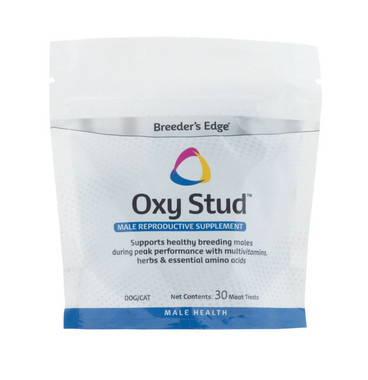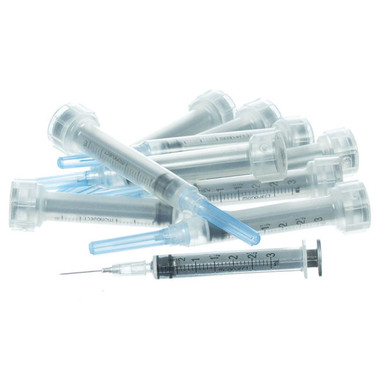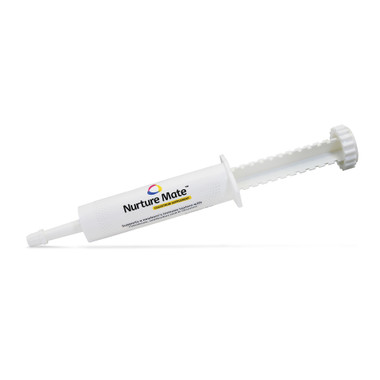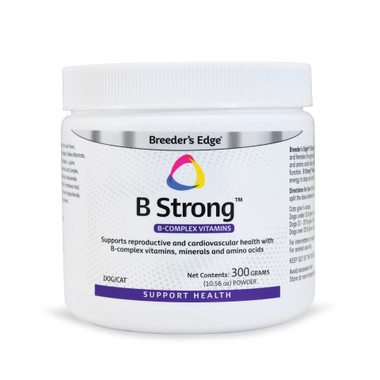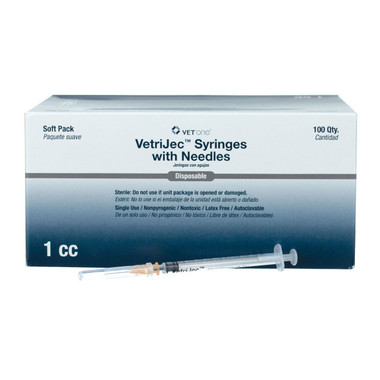How To Keep Your Senior Dog Healthy
Estimated 0 min read
 As our dogs begin to age, we start to notice changes, both in their behavior and appearance. Their once vibrantly-colored coats begin to take on a grey or white hue, and they move a little slower. The seemingly-endless playtime suddenly becomes a lot more finite, and you notice they’re much more in favor of just lounging around next to you.
As our dogs begin to age, we start to notice changes, both in their behavior and appearance. Their once vibrantly-colored coats begin to take on a grey or white hue, and they move a little slower. The seemingly-endless playtime suddenly becomes a lot more finite, and you notice they’re much more in favor of just lounging around next to you.
These changes bring to mind important questions: Do I have to adjust how I care for a senior dog? Can they still go on long walks or hikes with me, like they used to? Is giving them little nibbles of cheese still okay? While the answers to these questions ultimately are going to vary from dog to dog, there are still some relatively universal rules you can abide by that will keep your graying pup around for many happy years to come.
Keep Your Dog’s Weight In Check
When we think about the national “weight problem”, we tend to think of humans who can’t help but get large-sized meals, or people who just love soda. However, the weight problem is by no means restricted to just us bipedal creatures.
 By defining obesity in dogs as being 30% above their ideal body weight, it has been estimated that more than 55% of dogs can be categorized as overweight or obese. While having a bit of extra cushion isn’t likely to lead to significant issues, obesity presents significant health risks to dogs.According to the Association for Pet Obesity Prevention,dogs who are obese are at a greater risk for developing arthritis, chronic kidney disease, bladder/urinary tract disease, liver disease, low thyroid hormone production, diabetes, heart failure, high blood pressure, and cancer.
By defining obesity in dogs as being 30% above their ideal body weight, it has been estimated that more than 55% of dogs can be categorized as overweight or obese. While having a bit of extra cushion isn’t likely to lead to significant issues, obesity presents significant health risks to dogs.According to the Association for Pet Obesity Prevention,dogs who are obese are at a greater risk for developing arthritis, chronic kidney disease, bladder/urinary tract disease, liver disease, low thyroid hormone production, diabetes, heart failure, high blood pressure, and cancer.
When mixed with other afflictions that already plague older dogs, obesity can compound the damage done by existing conditions to a dangerous degree. According to veterinary behavioristNicholas Dodman at Tufts Cumming School of Veterinary Medicine,obesity can be especially brutal on dogs with bad joints, stating: “The large weight of the dog will stress the joints further. You can get a lot of relief if you can get him down to his fighting weight.”
However, don’t just go slashing your good old boy’s food intake by half just because they’re a bit chunky. Instead, go in with a plan. Weigh them first to get an exact idea of whether they’re overweight, underweight, or just right. If you discover your dog can afford to lose a few pounds, consult with your veterinarian to devise a plan on how to effectively cut back the amount of food you give them.
While we’re on the subject of food…
Feed Them a Senior-Friendly Diet
Your four-legged friend’s been eating that same brand of dog food for the past six years, so there’s no way they’d need to switch things up once they reach their golden years, right?
 Guess again!! Just as it is with humans, dogs’ dietary requirements evolve as they age. As Dr. Katie Kangas, founder of The Pet Wellness Academy, says: “[Practicing good nutrition] is literally the most important thing we can do to support and promote the health of our pets.”
Guess again!! Just as it is with humans, dogs’ dietary requirements evolve as they age. As Dr. Katie Kangas, founder of The Pet Wellness Academy, says: “[Practicing good nutrition] is literally the most important thing we can do to support and promote the health of our pets.”
But in order to fully understand how to practice “good nutrition”, we have to first discern what good nutrition is for senior dogs. One of the most important concepts to grasp is thatsenior dogs may require fewer calories than their spry counterparts.While that may point to the increased likelihood of your dog gaining weight, the opposite can also be true! As dogs progress from being a senior pup to an ancient dinosaur, they actually tend to start losing weight. In these cases, dogs need to have their diet monitored to ensure they’re getting enough calories rather than to make sure they’re not overeating. In any case, determining the exact right caloric intake for your dog is good conversation to have with your veterinarian.
However, discerning the optimal number of calories for your dog doesn’t help you understand what macro nutritional needs they might have developed as they age, and there’s a lot of misinformation out there. As an example, many believe dogs should eat less protein as they age to minimize potential negative impacts on their kidneys. However,while chronic kidney disease is a known health issue for elderly dogs, recent research disproves the notion that protein poses any harm to kidney function. In reality, veterinary dieticians are now in consensus that elderly dogs actually need up to 50% more protein in their diet than younger dogs in order to maintain a healthy muscle mass.
Additionally,you should consider orienting your senior dog’s diet around mitigating the effects that old age is having on their bodies. For example, many older dogs begin to suffer from constipation due to a progressively impaired colon. Luckily, we can limit the harmful effects of this organ breaking down by giving our senior dogs food that is high in fiber. Diabetic dogs can also greatly benefit from a low-fat, high-fiber diet thanks to the delayed absorption of food that this diet yields. However, be warned that giving your dog a diet that is too high in fiber may decrease the uptake of essential nutrients.
Also, as discussed previously, many dogs are predisposed to developing kidney diseases in old age. Likewise, some dogs’ hearts will stop working as well as they did when they were young pups. Thankfully, there are ways to feed your dog a heart- and kidney-healthy diet! A 2011 study revealed thatlow-phosphorus, high-potassium diets are particularly helpful for bolstering the function of your dog’s kidneys and heart. Decreasing your dog’s intake of sodium can also support their kidney and heart function.
Dr. Kangas also suggests thatone of the first (and easiest) steps we can take towards providing optimal nutrition to senior dogs is weaning our older pups off of processed foods.This is because heavily-processed foods are not only pro-inflammatory, but are known to contain preservatives and additives that are, at some level, toxic. Minimally-processed or unprocessed foods, on the other hand, tend to have higher quality ingredients and, due to their lower levels of processing, greater bioavailability of essential nutrients.
 However, diet alone is unlikely to solve all of an older dog’s nutritional deficiencies; that’s why many senior dog foods include supplements like glucosamine and chondroitin (two supplements that aim to prevent your dog from developing osteoarthritis). Unfortunately, the evidence that these ingredients work is limited.
However, diet alone is unlikely to solve all of an older dog’s nutritional deficiencies; that’s why many senior dog foods include supplements like glucosamine and chondroitin (two supplements that aim to prevent your dog from developing osteoarthritis). Unfortunately, the evidence that these ingredients work is limited.
On the other hand, there are a range of supplements you can give your aging furball that have been clinically proven to benefit their health. Perhaps one of the most famous examples is omega-3 fatty acid supplements. Originating from fish, krill oil, and phytoplankton, omega-3 fatty acids are not only anti-inflammatory, but can also improve your dog’s cognitive function andstabilize your dog’s heart muscle cells.Similarly, research conducted by Purina suggests that feeding your senior dog a normal diet supplemented by a mixture of antioxidants, B-vitamins, fish oil, and L-arginine led to significantly higher cognitive function.
Your dog’s heart, kidneys, and brain aren’t the only thing supplements can support. Two compounds we discussed above, glucosamine and chondroitin, can both be taken as standalone supplements to protect your dog’s joints and cartilage. Let’s not forget about the tummy, either. Human doctors are beginning to understand the importance of gut health, and veterinarians are doing the same. That’s why you see more and more dog-friendly probiotics coming to market.
All that being said, we know that diet and nutrition are only two parts of a total wellness regimen. One of the most important, and most loathed, aspects of maintaining optimal health is regular exercise and mental stimulation.
Keep Your Senior Dog Active – Physically and Mentally
Right now, you might be looking at your pup and thinking: “What? My dog? Slow down? Have you seen how fast he runs after that ball?”. And we understand completely. However, this thinking is misguided. Not only is waning mobility a common issue that senior dogs face, but some even deal with debilitating conditions like arthritis that make moving around genuinely painful.
 While senior dogs might be a bit slower than they used to be, they still need to move around. Ideally, you should walk your dog at least once per day even if you think their health should prompt less movement. Your walks don’t have to be marathons in order to get tangible benefits from them, either; according to Dr. Kangas, even a short ten-minute walk once per day can help stave off the progression of arthritis.
While senior dogs might be a bit slower than they used to be, they still need to move around. Ideally, you should walk your dog at least once per day even if you think their health should prompt less movement. Your walks don’t have to be marathons in order to get tangible benefits from them, either; according to Dr. Kangas, even a short ten-minute walk once per day can help stave off the progression of arthritis.
Be sure to also tailor your dog’s exercise regimen to their own capabilities. If your dog is suffering from a particularly mobility-limiting ailment like osteoarthritis or hip dysplasia, then you’ll want to choose a physical activity that eases stress on their joints such as swimming. Also, if you notice that your dog is walking stiffly after a walk, consider adjusting the length, intensity, or surface of their workout. Really, all you need to remember is that your dog’s workout routine is meant to benefit them, not you. If you notice your dog tends to take their sweet time on a walk,let them! The whole point is to get them out and about while keeping it enjoyable for them!
It’s not like exercising only yields physical benefits, either. On the contrary: moving around and getting outdoors is a simple, effective way to keep your pup’s brain sharp. Sitting around the house all day is boring, anyway! Giving your dog novel things to see and sniff each day will keep their brain active.
Exercise is by no means the only way to keep your dog’s brain young, though. Much like how humans use brain teasers and crosswords to keep their minds sharp and snappy, dogs can use toys to stimulate their brains. Certain toys, for example, prompt your dog to try and retrieve items that are hidden or are stuffed into the toy. These force your dog to think logically about how to solve the puzzle in order to get the reward. Other toys, such as the famous KONG, reward your pup while cleaning their teeth and soothing their gums. In order to keep your old pup’s interest, consider rotating your toys on a weekly basis to keep things fresh and exciting.
 And while the old saying goes “You can’t teach an old dog new tricks”, we think that’s a load of…. Well…you know. It may not be as easy to teach an old dog tricks, but it absolutely can be done and it pays off big in terms of keeping their mind sharp. All it takes is a little bit of patience and consistent encouragement from you!
And while the old saying goes “You can’t teach an old dog new tricks”, we think that’s a load of…. Well…you know. It may not be as easy to teach an old dog tricks, but it absolutely can be done and it pays off big in terms of keeping their mind sharp. All it takes is a little bit of patience and consistent encouragement from you!
Perhaps one of the most potent (and adorable) ways to enrich your dog’s brain is to get them a dog companion. We’ve all seen the videos of elderly dogs excitedly receiving a younger sibling, and they typically follow a formula: the elderly dog initially reacts with a bit of apprehension or is downright standoffish–followed shortly by the duo playing together. The message of these videos seems to be that a young dog can reinvigorate your old timer while the senior pup teaches the new dog social and behavioral skills. It seems like a win-win.
Now, while impossibly cute,this heart-warming scenario is not guaranteed.For starters, you should honestly assess your current dog’s sociability before introducing a new puppy. The last thing you want is for your graying pup to act mean towards the baby. Additionally, you’ll want to consult with your veterinarian to make sure your elderly dog is sufficiently capable, both physically and mentally, of handling the new puppy’s high energy levels.
Shine Those Chompers
The importance of a dog’s dental hygiene to their overall health can not be overstated.Not only will diligent dental care prevent the development of oral infections or the loss of teeth, but it will also prevent the development or worsening of certain medical conditions. This is because the bacteria that is present in oral plaque can enter the bloodstream and spread throughout the body, where it does additional (lasting) damage.
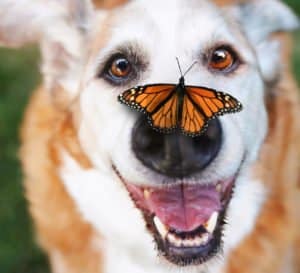 What’s worse: decaying teeth and gums can exacerbate presently-existing health conditions, which can be especially perilous for senior dogs. Unfortunately, many pet owners do not heed this warning, which is why 80% of dogs have some form of oral disease by age three. Thankfully, you can prevent these sorts of negative outcomes by giving your dog’s mouth just a little bit of T-L-C.
What’s worse: decaying teeth and gums can exacerbate presently-existing health conditions, which can be especially perilous for senior dogs. Unfortunately, many pet owners do not heed this warning, which is why 80% of dogs have some form of oral disease by age three. Thankfully, you can prevent these sorts of negative outcomes by giving your dog’s mouth just a little bit of T-L-C.
First things first: you need to feed your dog a well-balanced, nutritious diet. This ensures that the environment of your dog’s mouth is insusceptible to the growth of harmful bacteria. Next, make sure to brush your dog’s teeth every-day with a made-for-dogs toothbrush and toothpaste.
While you’re brushing their teeth, be sure to check their mouth for evidence of redness, bleeding, inflammation, and broken or cracked teeth. You might want to also consider getting your dog’s teeth professionally cleaned by a veterinarian to guarantee that nothing is missed.
Make Your Home Friendly to Senior Dogs
As dogs’ muzzles begin to gray and the walks with them get a bit slower and shorter, it becomes apparent to us that they’re really getting older. And while we may adjust how often and how hard they work out, or what we put in their food dish, we tend not to spend too much time thinking about how to make their living spaces a bit friendlier to their needs. This is a mistake, and it’s one we can easily fix.
 It all starts with acceptance that our dogs’ needs change as they get older. As we become more aware that our dogs are slowing down and their mobility is shrinking, we can take steps to make it easier for them to get around. An easy way to do this is to provide them with ramps so they can still go up the stairs, get on the couch, and climb into bed.
It all starts with acceptance that our dogs’ needs change as they get older. As we become more aware that our dogs are slowing down and their mobility is shrinking, we can take steps to make it easier for them to get around. An easy way to do this is to provide them with ramps so they can still go up the stairs, get on the couch, and climb into bed.
Speaking about bed, answer this question: when you’re 70+ years old, do you want to sleep on soft blankets or 20+ year-old bedsheets? We thought so. That’s why we implore you to make your senior dog’s bed as comfortable as possible! Give them soft blankets, and consider even springing for an orthopedic bed if your dog suffers from joint pain or arthritis.
Furthermore, there are other simple, low-cost ways to account for ailing joint health. One way is to account for how joint health impacts where our dogs spend their time. For example, if your kitchen has slippery flooring, an aging dog may begin to spend less time there. In order to prevent this from happening, you can install non-slip surfaces with rubber backings on any hard floors your dog walks on.
For good measure, you should also limit the frequency with which you move furniture around. As your dog ages, the strength of their senses will also begin to deteriorate. If you semi-frequently change the layout of your house, this can make navigating the home a stressful experience for a dog whose sight and smell are fading. After all, wouldn’t you be stressed if you just kept bumping into stuff in your house?
 Another, unexpected way to do right by your senior pooch is to elevate their food and water bowls. This may seem contradictory to the advice we’ve given thus far; after all, wouldn’t doing this make it harder for them to get food and water? Yes, but also no!
Another, unexpected way to do right by your senior pooch is to elevate their food and water bowls. This may seem contradictory to the advice we’ve given thus far; after all, wouldn’t doing this make it harder for them to get food and water? Yes, but also no!
While our natural instinct might tell us to lay the food and water bowls on the floor, or even bring the bowls to the dog, that may not be the best idea for their overall health. As explained by Connie Schulte, a certified canine rehabilitation practitioner at Blue Pearl Veterinary Specialty & Emergency Center in Missouri and Kansas: “Once we start providing everything for them, they no longer have the need to get up and walk to the food or water bowl.”
With this in mind, it makes sense that we’d want to find simple ways to keep our old buddies as mobile as possible for as long as possible. Hence the suggestion to elevate the bowls off the floor. With this simple action, we end up encouraging our old dogs to get up, travel to the bowls, and remain standing while they consume. By forcing them to move around more frequently throughout the day, even in this minimal way, we end up bolstering their mobility and preventing further muscle atrophy.Click here for more detail on how to make your home more comfortable for your senior pet.
Don’t Skip Those Health Check Ups
It may seem like an easy thing to do, but we strongly advise against falling into the mindset of: “I’ll wait until something is wrong before I take my pup to the vet.” This line of thinking actually goes against the consensus of most veterinarians who advise that senior dogs be examined bi-annually.
Regular, thorough physical check-ups by your veterinarian can help catch the beginnings of a variety of potentially lethal diseases and conditions including heart disease, kidney disease, cancer, and more. By catching them early on, your vet can work with you to develop a treatment plan that will prevent found conditions from worsening. Remember: it is almost always easier (and cheaper) to prevent a disease than it is to treat one.
However, we know that you’re a diligent pet parent and that you’re likely to pursue solutions quickly. That’s why we know that, if your senior pupperoni ever starts displaying signs of skin infections or injuries, you’ll use Banixx Pet Care! Our antimicrobial spray offers immediate, sting-free relief from a variety of bacterial and fungal infections – all without leaving a lingering odor or relying on steroids or antibiotics. Just identify the affected area, apply Banixx once or twice daily, and watch your dog recover from anything such as an ear infection, hot spot, itchy skin, ringworm & more…Relief really can be that simple.
And so can learning ways to keep your dog happy and healthy, regardless of their age. We hope you found this article helpful and if your dog ever gets any cuts, abrasions,ear infectionsorhot spots,we hope you keep Banixx Pet Care in mind.
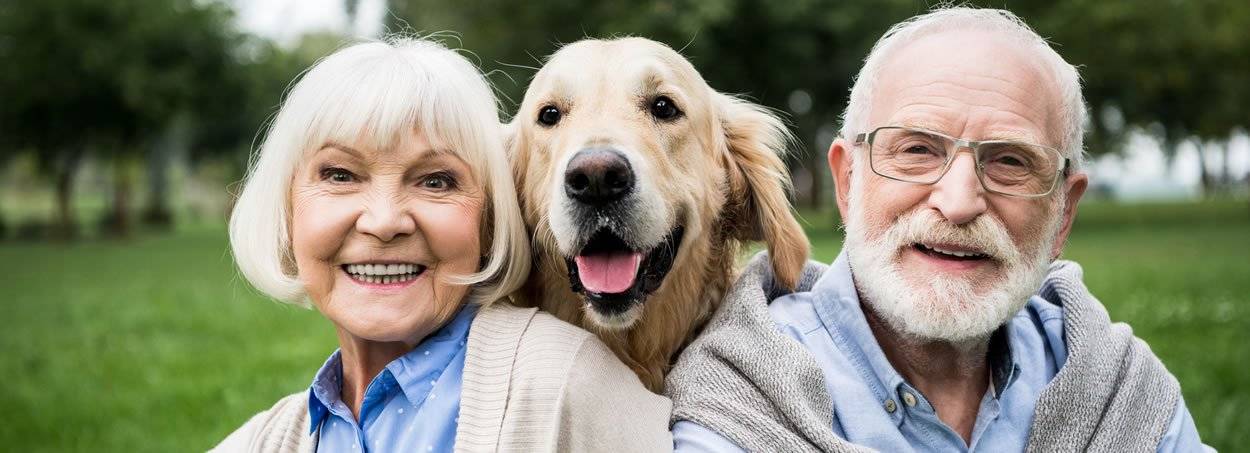
Sources
- https://www.akc.org/expert-advice/nutrition/obesity-in-dogs-a-major-health-threat-hiding-in-plain-sight/
- https://petobesityprevention.org/
- https://www.npr.org/2010/11/23/131516152/helping-your-good-old-dog-navigate-aging
- https://www.akc.org/expert-advice/nutrition/how-to-feed-the-senior-dog/
- https://vcahospitals.com/know-your-pet/kidney-failure-chronic-in-dogs
- https://www.akc.org/expert-advice/nutrition/nutritional-needs-for-senior-dogs/
- https://pets.webmd.com/dogs/guide/senior-dog-food
- https://vcahospitals.com/know-your-pet/nutrition-for-dogs-with-heart-disease
- https://www.rover.com/blog/senior-dog-tips/
- https://www.akc.org/expert-advice/health/provide-senior-dog-proper-exercise/
- https://www.akc.org/expert-advice/lifestyle/toys-and-games-for-senior-dogs/
- https://thebark.com/content/stay-young-keeping-older-dogs-busy
- https://www.thehonestkitchen.com/blog/old-dogs-and-new-puppies-made-in-heaven-or-not/
- https://www.orvis.com/dental-care-for-older-dogs
- https://www.petmd.com/news/view/5-reasons-why-dog-dental-care-important-38003
- https://www.petmd.com/dog/care/evr_multi_senior_pet_health_tips
- https://www.dogsnaturallymagazine.com/senior-dog-care-9-ways-to-keep-your-aging-dog-healthy-happy/









